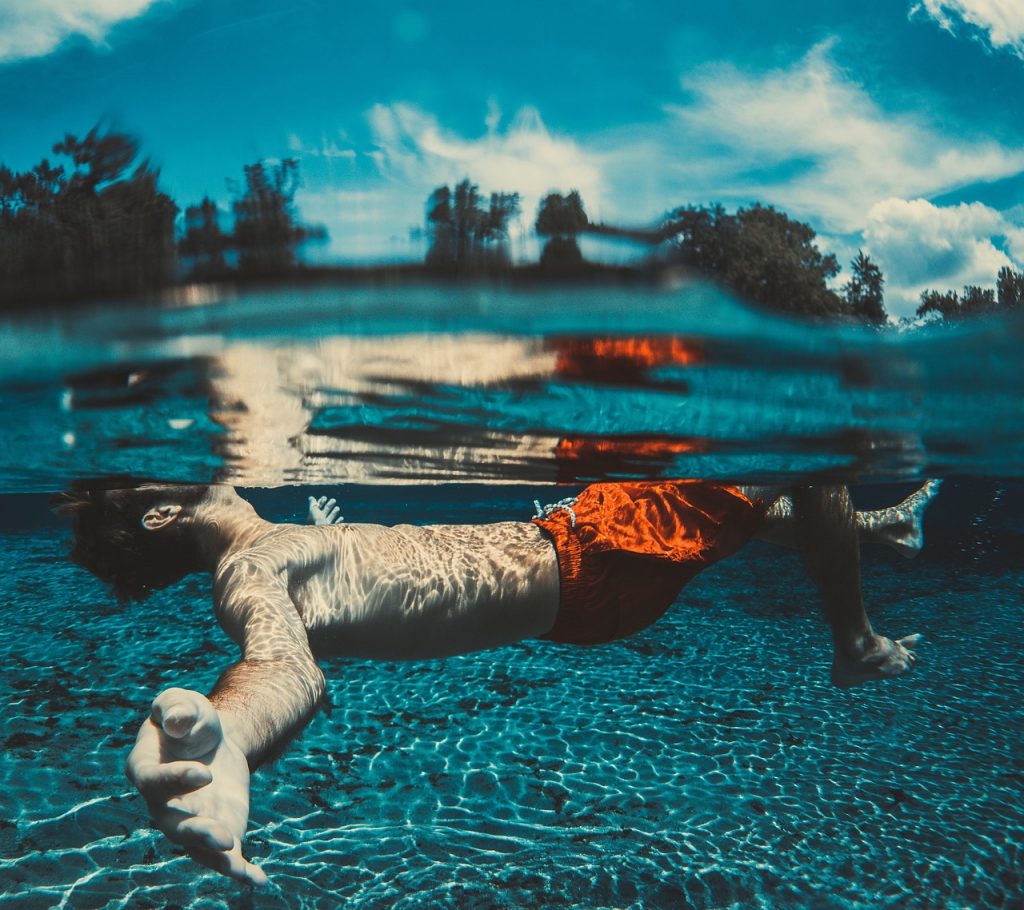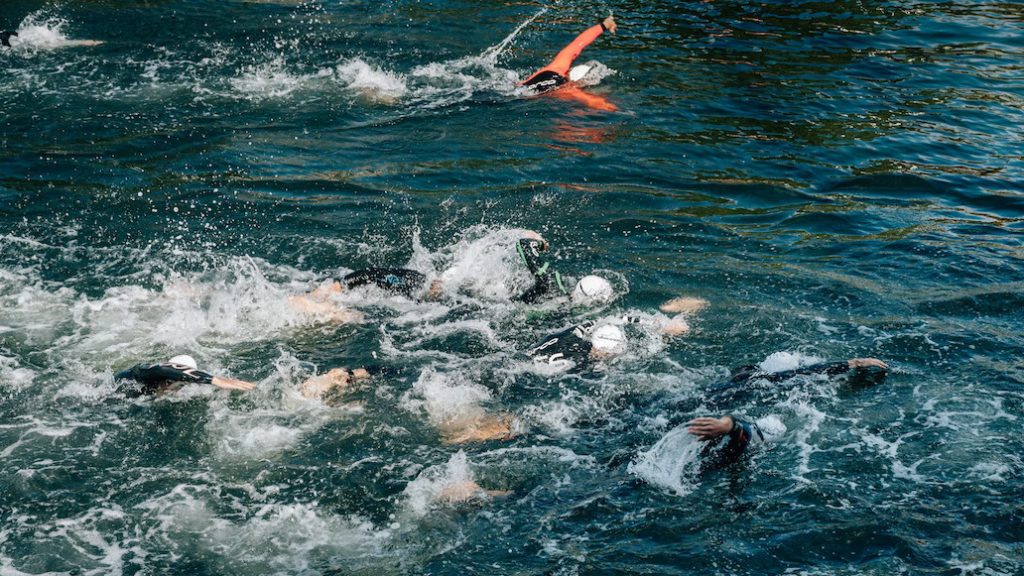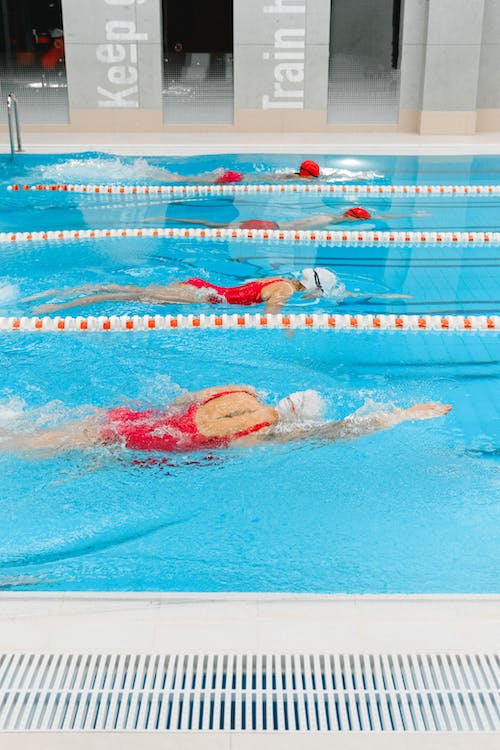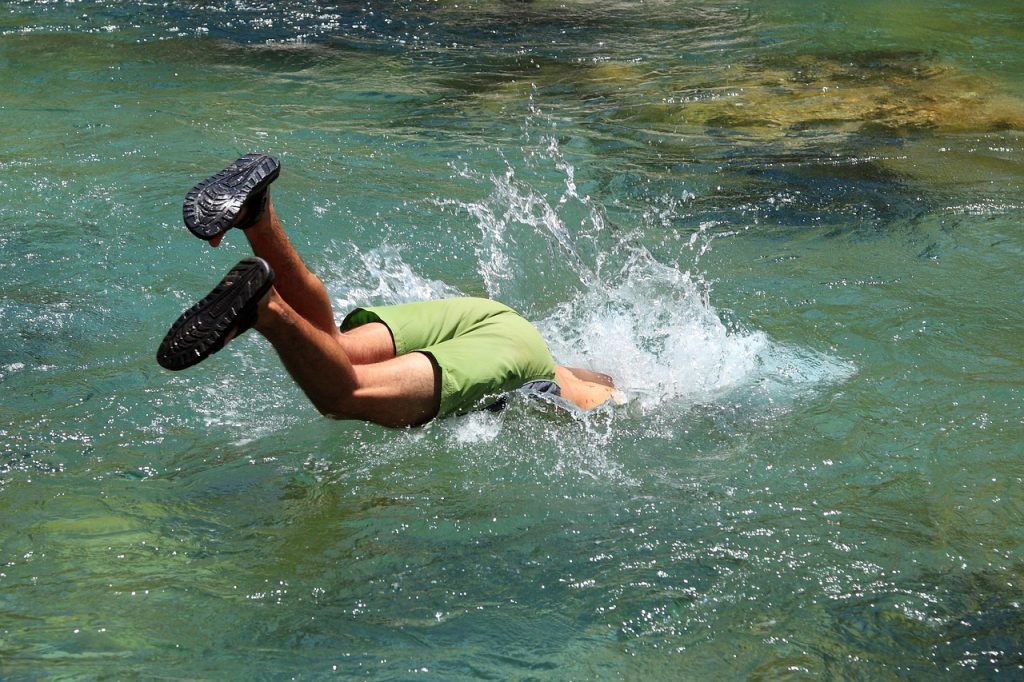When it comes to swimming, size may not always be the deciding factor for success. Some amazing talents may be shorter in height but are incredibly strong and skilled in the water.
We are talking about the shortest swimmers – those athletes shorter in size who defy expectations and swim in the pool with remarkable grace and speed.
In this article, we will dive deep into the realm of the shortest swimmers and share the secrets and tips to also accomplish their achievements.
From overcoming physical limitations to using their unique advantages, we’ve collected 15 expert tips to assist these small but mighty athletes in overcoming challenges and utilizing their strengths to compete at the highest level, leaving their bigger competitors behind in the water.

If you are one of the shortest swimmers around your training environment or an aspiring short swimmer seeking to make a splash or to develop your swimming skills, these tips are well made to move you towards greatness.
So, let’s embark on this aquatic journey together and discover how you mighty swimmers can conquer the waters with tenacity, technique, and sheer determination!
Challenges Faced By the Shortest Swimmers in the Swimming Sport
- Difficulty with Starting Blocks and Dive Advantage:
When it comes to the start of a race, taller swimmers often have an advantage.
The height differential allows them to push off from the starting blocks with more force, moving further into the water.
Shorter swimmers must master their diving technique and timing to optimize their launch and stay competitive with their taller counterparts.
- Inability to Long for Reach and Stroke Length:
Having a shorter wingspan can present challenges in achieving longer strokes, which are essential for covering more distance per stroke.
Shorter swimmers must compensate by perfecting their stroke mechanics and developing a faster stroke rate to maintain competitive speeds.
- Not Able to Perform the Underwater Dolphin Kicks:
Elite swimmers use underwater dolphin kicks to gain momentum and maintain a streamlined body position after starts and turns.
Shortest swimmers have less body length to generate power during these kicks, making it important for them to perfect their technique and streamline their bodies to the utmost.
- Psychological Pressure:
Being shorter in stature can lead to psychological pressure, as some may perceive height as a competitive advantage.
This can affect a swimmer’s confidence and motivation. Coaches and support systems play a vital role in helping the shortest swimmers build mental resilience and maintain a positive mindset.
How the Shortest Swimmers Have Adapted to the Swimming Sport
Swimming is a sport that welcomes participants of all shapes and sizes, and some of the most exceptional athletes in the world are not towering giants but rather short swimmers.
While height can be advantageous in some sports, such as basketball or volleyball, it has been a prevailing myth that taller swimmers have a natural edge in the water.
The thinking behind this is that longer limbs provide greater leverage and better reach, leading to more powerful strokes.
However, the truth is that swimming is a highly technical sport, and most of the shortest swimmers have excelled by perfecting their technique and making the most of their unique strengths.
Most of the shortest swimmers have learned to optimize their stroke efficiency and technique to enhance their performance.
They focus on maintaining a streamlined body position to reduce drag in the water.
Their shorter limbs can lead to faster turnover rates, allowing them to maintain a quick and consistent movement throughout their swim.
Additionally, shorter swimmers often have a lower center of gravity, which aids in stability during turns and starts.
To complement their technique, the shortest swimmers invest heavily in strength training to build power and explosiveness.
They work on strengthening their core, shoulders, and legs to generate more force with each stroke.
By combining their improved technique with increased power, shorter swimmers can maximize their movement through the water.

Swimming requires not just physical effort but also mental strength. Most of the shortest swimmers face doubts and disbelief due to their height, but they have demonstrated remarkable mental toughness and determination.
They use the doubters as motivation to prove their capabilities and showcase their talent in the pool.
The Shortest swimmers often find success in specialized events that suit their strengths.
Sprint events, such as the 50m and 100m races, rely heavily on explosive speed and quick turns, playing to the strengths of shorter athletes.
Embracing these specialized events allows them to compete at the highest level and showcase their unique abilities.
Coaches have also adapted their training methodologies to suit the needs of shorter swimmers.
They focus on personalized training plans that leverage the swimmer’s physical attributes while improving overall performance.
Tailored workouts address the specific challenges shorter athletes face, ensuring they can excel despite any perceived height disadvantage.
Inspiring Stories of Shortest Swimmers Who Defied the Odds with Mental Resilience in the Sport
- Anthony Ervin:
Standing at 6 feet 3 inches tall, Anthony Ervin is not the shortest swimmer, but his journey is an inspiring tale of resilience.
After winning the gold medal in the 50m freestyle at the Sydney 2000 Olympics, he faced personal struggles that led him to step away from swimming.
However, he made an incredible comeback, overcoming mental barriers and addiction to win another gold medal in the same event at the Rio 2016 Olympics, becoming the oldest individual Olympic gold medalist in swimming at the age of 35.
Anthony Ervin’s story demonstrates the importance of mental strength and the capacity to rise above adversities.
- Katie Hoff:
At 5 feet 9 inches, Katie Hoff an American female swimmer faced challenges due to her height, but her unwavering mental resilience helped her achieve tremendous success in the pool.
Katie Hoff was a dominant force in American swimming, securing numerous national titles and setting world records.
Despite facing health setbacks and injuries, she continued to strive, proving that mental tenacity is just as important as physical prowess.
- Nathan Adrian:
Nathan Adrian, standing at 6 feet 6 inches, might not be considered short in everyday life, but in swimming, he overcame stereotypes and challenges associated with his height.
Known for his freestyle speed, Adrian won multiple Olympic gold medals and World Championship titles.
He battled through a cancer diagnosis and treatment, displaying immense mental strength and determination throughout his journey back to the pool.
- Ranomi Kromowidjojo:
At 5 feet 11 inches, Ranomi Kromowidjojo, affectionately known as “Kromo,” is a Dutch sprint swimmer who defied height stereotypes in the world of swimming.
Kromo is an Olympic champion, with multiple gold medals in the 50m and 100m freestyle events.
Her mental resilience and dedication to her craft have made her a role model for aspiring swimmers worldwide.
- Bradford Paul Cooper:
Standing at 5 feet 3 inches, Australian swimmer Bradford Paul Cooper is another athlete who faced preconceived notions about height in swimming.
Despite the challenges, Brad Cooper became one of the world’s freestyle swimmers, earning numerous international medals.
His unwavering mental resilience and focus on self-improvement allowed him to excel and challenge the notion that shorter swimmers couldn’t compete at the highest level.
The inspiring stories of these shortest swimmers serve as a reminder that mental resilience is a vital ingredient for success in the world of competitive swimming.

They defied the odds and broke stereotypes, proving that determination, persistence, and a strong mindset are essential for thriving in any sport.
As we celebrate these incredible athletes, let their stories inspire future generations of swimmers to embrace their uniqueness, work tirelessly toward their dreams, and show the world that greatness knows no height limits.
READ ALSO: How Swim Backpack Empowers Swimmers to Conquer Swimming Challenges
15 Expert Tips for the Shortest Swimmers to Compete at the Highest Level
-
Master Your Technique: Focus on perfecting your swimming technique to swim through the water more smoothly and use less energy.
Work closely with coaches to develop your swimming strokes and turns for optimal performance. -
Build Body Strength: Developing a strong body is essential for shorter swimmers to generate power and maintain stability during starts, turns, and powerful strokes. Incorporate core-focused exercises into your training routine.
-
Embrace Your Height: Instead of viewing your height as a disadvantage, embrace it as a unique aspect of your swimming style.
Recognize that success in swimming is not solely determined by height but by skill and determination.
-
Focus on Mastering Underwater Dolphin Kicks: Shorter swimmers can gain a significant advantage during starts and turns by mastering underwater dolphin kicks.
Work on perfecting your technique to gain momentum and maintain a streamlined position. - Fine-Tune Your Starts: While height can affect the initial push off the starting blocks, shorter swimmers can make up for it by improving their diving technique and timing. Focus on creating a powerful and streamlined start.
- Develop Your Turn Efficiency: Shorter swimmers should concentrate on maintaining speed and precision during turns. Practice quick flips and push-offs to minimize time spent underwater and maintain momentum.
- Develop Mental Resilience: Mental toughness is crucial for success in any sport. Train your mind to overcome setbacks, embrace challenges, and stay focused on your goals during both training and competitions.
- Set Realistic Goals: Establish clear and attainable short-term and long-term goals for your swimming career. Celebrate each milestone, and let your achievements motivate you to push further.
-
Analyze Your Races: Review your race performances with your coach to identify areas for improvement.
Analyzing your strengths and weaknesses will help you tailor your training to focus on specific aspects of your swimming. -
Seek Personalized Coaching: Enlist the help of coaches experienced in working with shorter swimmers. Personalized coaching can offer valuable insights and tailored training plans that suit your physical attributes.
- Cross-Train for Balance: Engage in cross-training activities like yoga, Pilates, or strength training to complement your swimming workouts. A balanced approach to fitness can enhance your overall performance.
- Prioritize Recovery: Ensure adequate rest and recovery between intense training sessions to avoid burnout and reduce the risk of injury. Taking time to recover is very important to keep performing at your best.
-
Stay Hydrated and Eat Well: Maintain a balanced diet and stay hydrated to fuel your body for rigorous training. Proper nutrition supports your physical and mental well-being, enhancing your swimming performance.
- Surround Yourself with Support: Build a strong support system of coaches, teammates, and family who believe in your potential and encourage you to push your limits.
- Enjoy the Journey: Remember that swimming is not just about competitions and medals; it’s a journey of self-improvement and personal growth. Enjoy the process, stay passionate, and have fun in the pool.
READ ALSO: 10 Mind-Blowing Sports Captain Speech for Swimming Success
Swimming Techniques Used By the Shortest Swimmers
- Streamline Your Body Position:
One of the fundamental principles in swimming is maintaining a streamlined body position to reduce resistance in the water.

Shortest swimmers excel at mastering this technique by keeping their bodies straight, extending their bodies as much as possible, and tucking their chin to create a smooth movement in the water.
This minimizes drag and allows them to swim effortlessly through the pool.
- They Use Efficient Arm Strokes:
They often compensate for their height by developing their arm strokes. They focus on high elbow positions during the pull phase, creating a powerful yet efficient stroke.
A high elbow position helps speed up movement in the water, enabling them to generate enough force to move their bodies forward efficiently.
- They Practice Quick and Agile Kicks:
The Shortest swimmers understand the importance of swift and agile kicks. They utilize shorter and faster kicks to maintain their rhythm and momentum.
This approach enables them to keep up with taller competitors while putting out less energy.
The flutter kick is their best friend, and they ensure their legs remain relatively close together, reducing drag and increasing overall speed.
- They Utilize the Power of Core Strength:
Core strength is a major key in swimming, and the shortest swimmers leverage this to their advantage.
Their enhanced core stability allows them to maintain proper body alignment and prevent unnecessary energy wastage.
It enables them to stay horizontal in the water, developing their body position for maximum efficiency.
- Focus on Breathing Techniques:
Breathing efficiently is crucial for any swimmer, and the shortest swimmers often develop specific techniques to optimize their breaths.
They practice bilateral breathing (breathing on both sides) to maintain better balance and reduce the strain on a single side.
Additionally, they learn to time their breaths with their arm strokes to ensure minimal disturbance to their stroke rhythm.
- Embrace the Underwater Dolphin Kick:
The underwater dolphin kick is a valuable skill in competitive swimming, and shorter swimmers master this technique to gain a competitive edge.
They perfect their dolphin kick to maximize the distance underwater during starts and turns, using it as an opportunity to make up for any height disadvantage.
The Importance of Supporting Young Short Swimmers with great potential
- Recognizing Talent and Potential:
In swimming, talent can manifest in various forms. Coaches, parents, and mentors need to recognize and appreciate the unique strengths of young short swimmers.
Their agility, quick turnover rate, and ability to execute precise turns should be celebrated and nurtured.
By acknowledging their potential, we provide them with the confidence and motivation needed to excel in the swimming sport.
- The Impact of Early Support:
Early support can make a world of difference in a young swimmer’s journey. Encouraging participation in swimming programs, offering mentorship, and providing access to proper training facilities can set the foundation for success.
Talented young short swimmers need a nurturing environment that fosters their growth, both physically and mentally.
- Emphasizing Skill and Technique:
Swimming is a sport that relies heavily on technique and skill. For young short swimmers, mastering these attributes becomes even more critical.

Coaches should place a strong emphasis on perfecting strokes, starts, and turns, as these areas play to the strengths of shorter athletes.
By mastering technique, young short swimmers can gain a competitive advantage that transcends height differences.
- Building Confidence and Self-Belief:
Height-related stereotypes can sometimes create doubts in the minds of young short swimmers.
It is crucial to build their confidence and self-belief, reminding them that talent, hard work, and determination can overcome any physical limitation.
As they face challenges, providing unwavering support and belief in their abilities will create a sense of resilience and determination in them.
- Nurturing a Diverse Swimming Community:
Supporting young short swimmers is not just about individual success but also about creating a more inclusive and diverse swimming community.
Celebrating the achievements of talented athletes of all heights will inspire others to pursue their dreams and break through perceived barriers.
A diverse swimming community not only enhances the sport’s competitive landscape but also promotes unity and camaraderie among swimmers from all backgrounds.
- Tailored Training Programs:
To unlock the full potential of young short swimmers, coaches should design tailored training programs that suit their unique attributes.
While some aspects of training are universal, customization is essential to maximize performance. Incorporating strength training, flexibility exercises, and specialized drills can help short swimmers optimize their abilities in the water.
- Celebrating Short Swimmer Success Stories:
Highlighting the success stories of short swimmers can serve as powerful motivation for the next generation.
By sharing these stories through media, social platforms, and community events, we can inspire young athletes and debunk the myth that height is the sole determinant of success in swimming.
READ ALSO: 15 Swimmer’s Sportsmanship Qualities That Define A Great Swim Athlete
Conclusion
For the shortest swimmers, achieving success at the highest level requires a combination of skill, dedication, and mental fortitude.
Embrace your uniqueness, focus on improving your technique, and maintain a positive mindset throughout your swimming journey.
Remember, you have the power to shatter wrong ideas and prove that height is not the only measure of greatness in the swimming pool.
By following these expert tips and staying committed to your goals, you too can compete at the highest level and leave a lasting impact in the world of competitive swimming.
